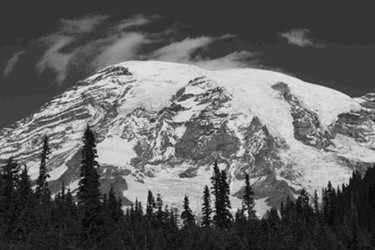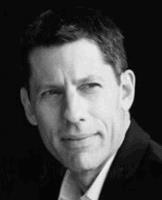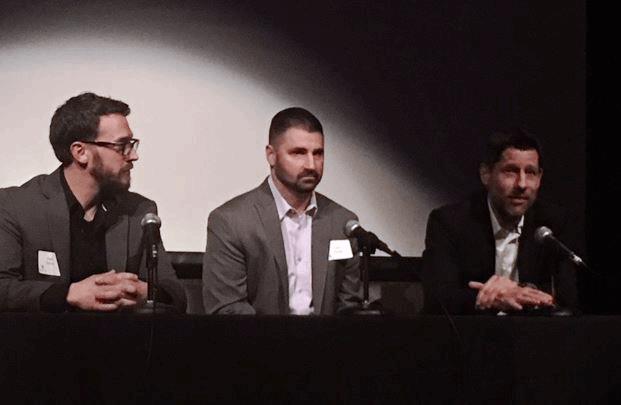The Father And CEO Who Climbed A Mountain To Raise Awareness

By Ed Miseta, Chief Editor, Clinical Leader

Editor’s Note: On December 6, 2017, I had the opportunity to visit the Cleveland Museum of Arts to be a part of the initial screening of a new film titled, The Weight of a Mountain. The film is about the children and families who are struggling to deal with the devastating effects of Sanfilippo Syndrome. It is also about the father of two Sanfilippo children and the CEO of a small pharma company who chose to climb a mountain to raise awareness of the disease and bring in needed funding for research. The film is one of the most touching I have seen, and when it was over there was not a dry eye in the house. This article is about that struggle.
How far would most CEOs go to raise awareness of the diseases they are attempting to treat? Tim Miller, CEO of Abeona Therapeutics, climbed more than 14,000 feet to the top of Mt. Rainier to raise awareness for Sanfilippo Syndrome, a rare and deadly genetic disease that impacts children. But then again, Miller is not your ordinary CEO.
 After graduating from Case Western University with a PhD in pharmacology and a focus in gene therapy, Miller expanded his pharmaceutical experience as a scientist with Copernicus Therapeutics, by joining Juventas Therapeutics before being named Senior Director of Product Development at SironRX Therapeutics. While in those positions he became aware of the huge unmet need in the rare disease area. He felt there was not enough being done for those patients and their families, and wanted to do more to help. In 2013 Miller, who has three children of his own, launched Abeona, named after the Roman Goddess who watches over children as they take their first steps away from home. He has already helped raise over $7 million during the privately held days and now as a publicly traded entity to transition multiple novel biologics from pre-clinical into Phase 1/2 clinical trials.
After graduating from Case Western University with a PhD in pharmacology and a focus in gene therapy, Miller expanded his pharmaceutical experience as a scientist with Copernicus Therapeutics, by joining Juventas Therapeutics before being named Senior Director of Product Development at SironRX Therapeutics. While in those positions he became aware of the huge unmet need in the rare disease area. He felt there was not enough being done for those patients and their families, and wanted to do more to help. In 2013 Miller, who has three children of his own, launched Abeona, named after the Roman Goddess who watches over children as they take their first steps away from home. He has already helped raise over $7 million during the privately held days and now as a publicly traded entity to transition multiple novel biologics from pre-clinical into Phase 1/2 clinical trials.
Abeona is focused on rare diseases in children and currently has over six products in clinical and preclinical development for Sanfilippo Syndrome, juvenile and infantile Batten disease, Epidermolysis Bullosa, Fanconi Anemia, and undisclosed rare blood diseases.
One Step At A Time
Sanfilippo Syndrome does not typically appear in children until they are a few years old. Parents will generally notice that their children are not developing as expected, or that acquisition of new skills has slowed or ceased. Genetic tests are used to confirm the diagnosis of Sanfilippo, often at the end of an odyssey of searching for answers. Once symptoms appear, there is a progressive physical and mental deterioration marked by severe behavioral issues, sleep disturbances, and the loss of speech, the ability to walk or feed oneself, culminating in loss of life for each afflicted child. For children diagnosed with Sanfilippo, 70 percent will not reach their 18th birthday.
For many parents, that diagnosis is the beginning of a long struggle to deal with the effects of the disease. Those struggles have now been documented in a movie titled The Weight of a Mountain, produced and directed by filmmaker Dan Salvo. In December 2017, it was screened for the first time at the Cleveland Museum of Arts, just a short drive from Abeona’s offices in Cleveland, OH.
“The film documents the efforts of parents whose children have Sanfilippo syndrome,” says Michelle Berg, VP Patient Affairs and Community Engagement for Abeona and Executive Producer of the Sanfilippo documentary. “It is about their journey to create hope where none had previously existed.”
The film was a project undertaken by Salvo and Carl Kapes, a father and co-founder of Team Sanfilippo, a non-profit foundation started by parents of children with Sanfilippo Syndrome. The goal of the foundation is to raise money to help drive awareness and fund potential new therapies for the disease.
The Beginning Of A Journey
In the beginning of the summer of 2009, Kapes was the father of two healthy, young, and developing boys. That was the summer that his eldest son, Ryan, was diagnosed with Sanfilippo. Because the disease is a genetic disorder and is hereditary, it was recommended that his younger son, Brayden, also be tested for the disease. No one expected a positive result. It is rare to have one child diagnosed with it, much less two. Yet that is exactly what happened. Almost overnight, Kapes went from having two healthy sons to having two boys with a difficult and certain future ahead of them.
“With no therapy or drug on the market, I was told to take them home and love them while I could,” says Kapes. “I can’t even begin to describe how devastating it was to be told that my children would die and there is nothing that I could do. You never forget the look on the face of the geneticists when they tell you that. They tell you there is no treatment, there is no cure, and it will be fatal.” Kapes shares how he cried and pounded on the walls. Initially he did not know what to do. But once the initial shock wore off, he knew he had to do something.

From left to right: Dan Salvo, Carl Kapes, and Tim Miller answer questions after the premier screening of The Weight of a Mountain.
Kapes felt he had to help not just his sons, but for the entire Sanfilippo community. There are nearly 7,000 known rare diseases, which afflict an estimated 30 million Americans and 35 million Europeans. However, since each rare disease (as defined in the United States) has fewer than 200,000 patients, many are unheard of and receive little funding. Kapes felt he needed to bring attention to the thousands of children and caregivers battling the disease. That attention would hopefully bring with it more dollars for research.
Every parent of a Sanfilippo child will tell you they face the future one day at a time, and one step at a time. The search for a cure for Sanfilippo is also a slow progression that is also taken one step at a time. So Kapes decided to bring attention to the struggle in a similar manner, by undertaking a journey that would require a focused determination and a step-by-step approach. He decided to climb to the top of Mt. Rainier, which he says served as a symbol of what parents and caregivers are up against. “It represented doing the impossible,” he adds. “Humans shouldn’t be at 14,000 feet, and that struggle to get from point A to point B was a good representation of what these patients and parents are going through.”
A Treacherous Climb
Upon hearing of the journey, Miller, who has a close relationship with many of the parents of children with Sanfilippo Syndrome, knew the climb was something he would also have to do. They recruited Salvo to make the trip, to film and document the journey, and began training for the physical requirements of the climb. In 2016 they made the trek to the top of the Mt. Rainier, where a flag was unfurled bearing the names of children battling the disease. The journey was by no means an easy one.
“There are so many risk factors you have to consider when climbing a mountain as high as Mt. Rainer,” says Kapes’ trainer, Glynn Willard. “This goes far beyond having strong legs and being able to take high steps. There are loose rocks to be aware of, and you could hear avalanches almost daily. You also have to worry about the oxygen level, which goes down the higher you climb.”
The climb was not pleasant. Kapes states it involved climbing on glaciers and snow, dealing with extreme cold and wind, as walking in freezing rain that seemed to come down sideways. The last leg of the climb involved going to bed at 6 pm, waking up at midnight, and making the final ascent in the pitch dark except for the light strapped to your head.
“You are on the sheer face of the mountain,” says Miller. “You are walking on a path just inches wide. You look up and all you can see is the line of headlamps in front of you, which seem to be rising almost vertically. It is a long climb and you are pushing yourself like you never have before, both mentally and physically.”
Doing It For The Families
“When we got to the top, Tim and I embraced each other and it was a very special moment,” says Kapes. “The adrenalin and the happiness we felt, coupled with the symbolism of what it represented, gave us an amazing sense of accomplishment.”
At no point on the climb up or back did Kapes or Miller forget their achievement was undertaken for the benefit of the families enduring Sanfilippo Syndrome. As tiring as the days were, Miller never forgot that the parents of children with Sanfilippo deal with far greater challenges on a daily basis. “Each day was exhausting for me, both emotionally and physically,” he says. “These families have to deal with something similar every single day. Their journey can last 20 years, and keeps getting harder as they move along.”
The families dealing with the effects of Sanfilippo Syndrome are not expecting a miracle. Even with increased awareness and funding, they know a cure is not around the corner. What many are hoping for is simply a longer life for their children. Although Sanfilippo robs the children of their physical and mental abilities, it does not rob them of their ability to love and feel emotion.
Kathy Buckley has a son, Matthew, who also has Sanfilippo. He is 16 years old and is 5 foot 8 inches tall and weighs 165 pounds. But he is only 18 months old in his mind. “He is the most loveable little boy,” she says. “He has a smile that could take someone who is in the worst mood and make them forget everything. He wants to sit on your lap and just hug you and kiss you. I know he will have a better life if we can just find a treatment that will extend it. This is not about making a perfect child. This is not about the reversal of skills or finding a cure. It is about having a longer, happy life to spend with family and loved ones.”
It’s that sentiment that sent Miller up Mt. Rainer, and keeps him and his team engaged in the search for a treatment for Sanfilippo. What Sanfilippo families have today, that families did not have 20 years ago, is hope. For those families carrying the weight of a mountain, efforts like this might someday allow them to see the light at the end of the tunnel.
